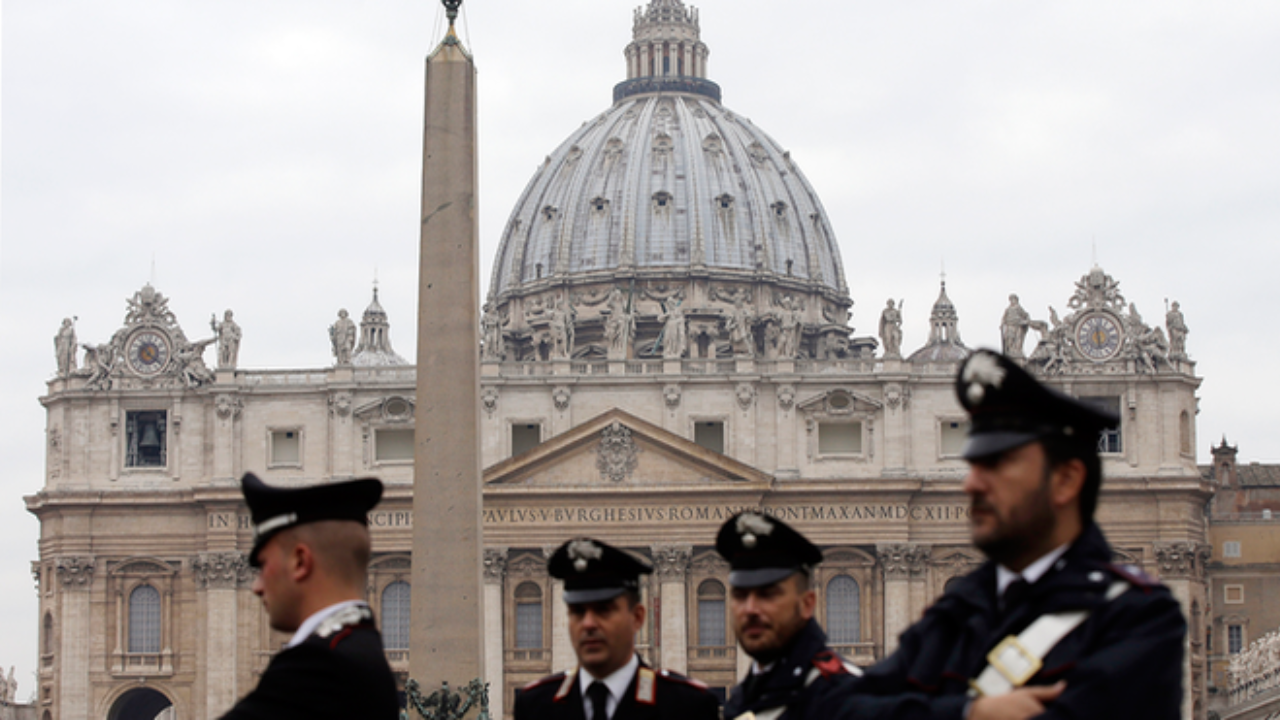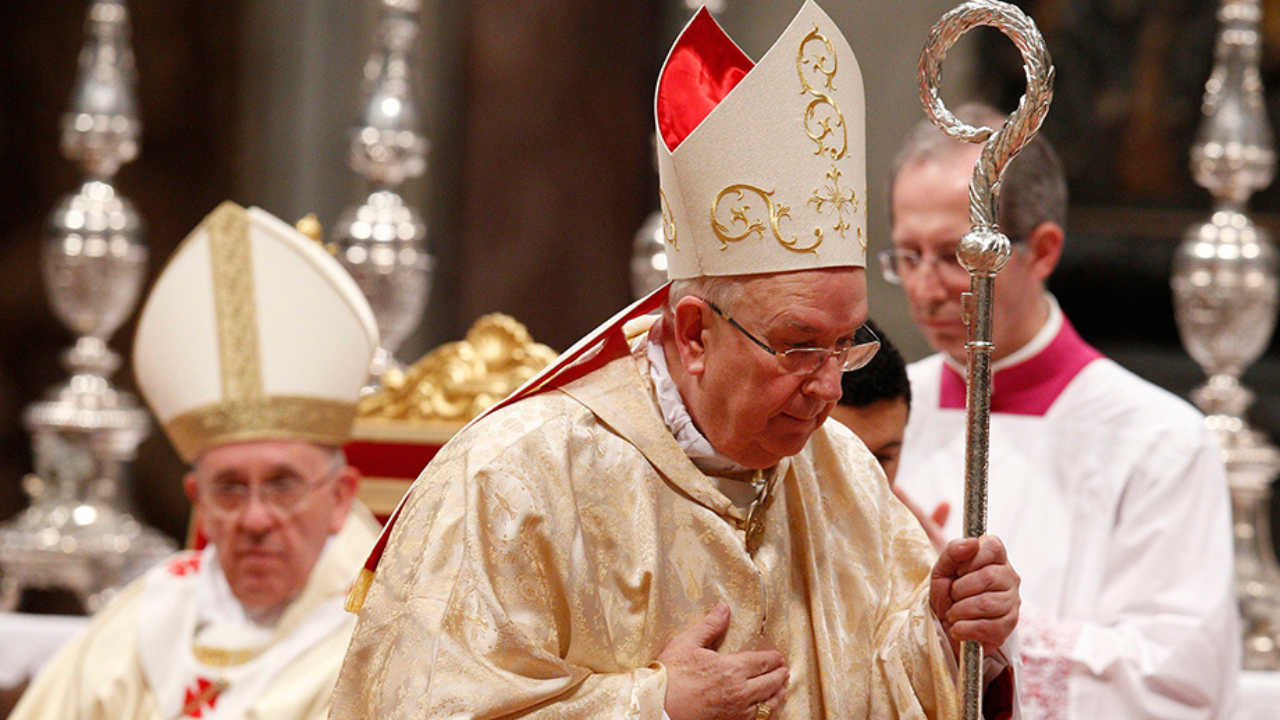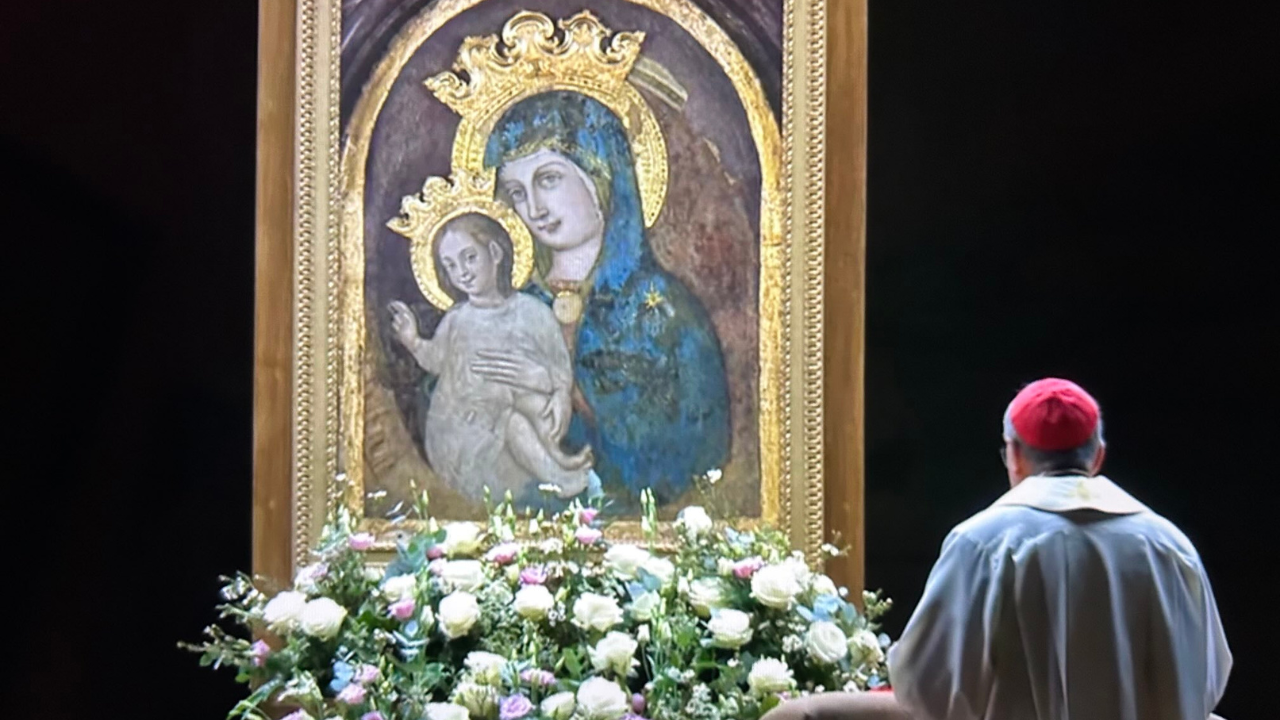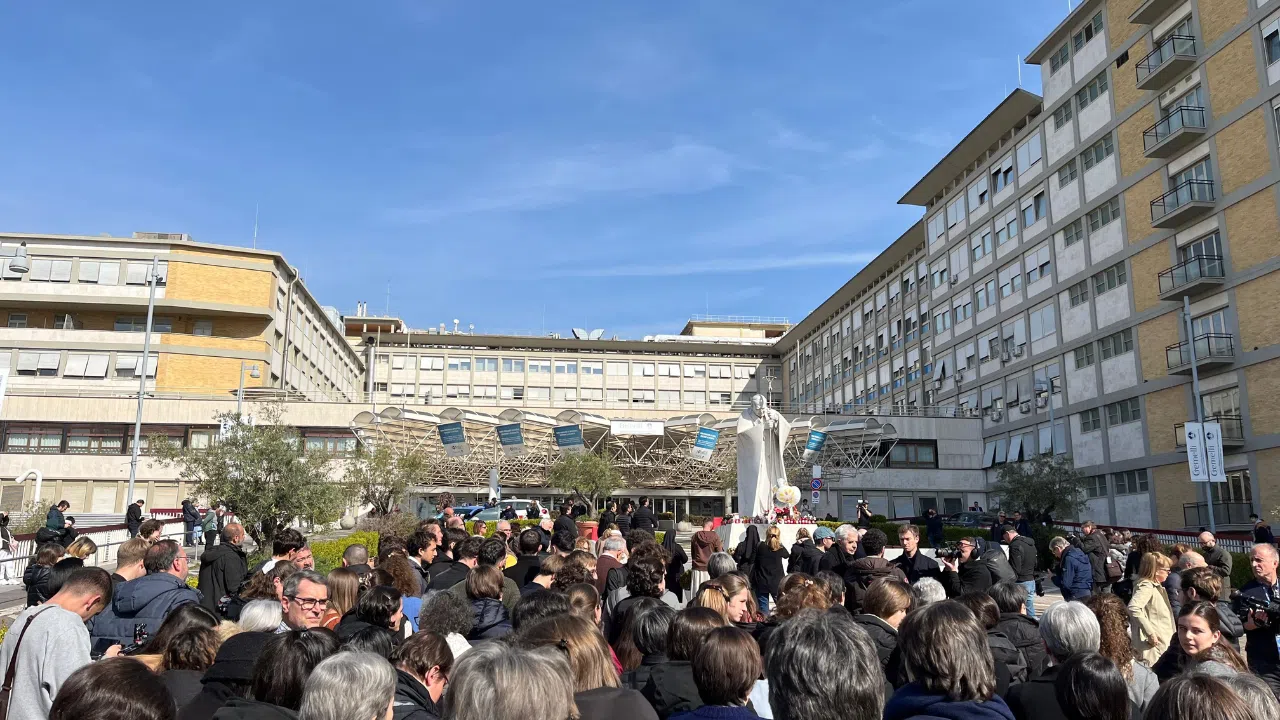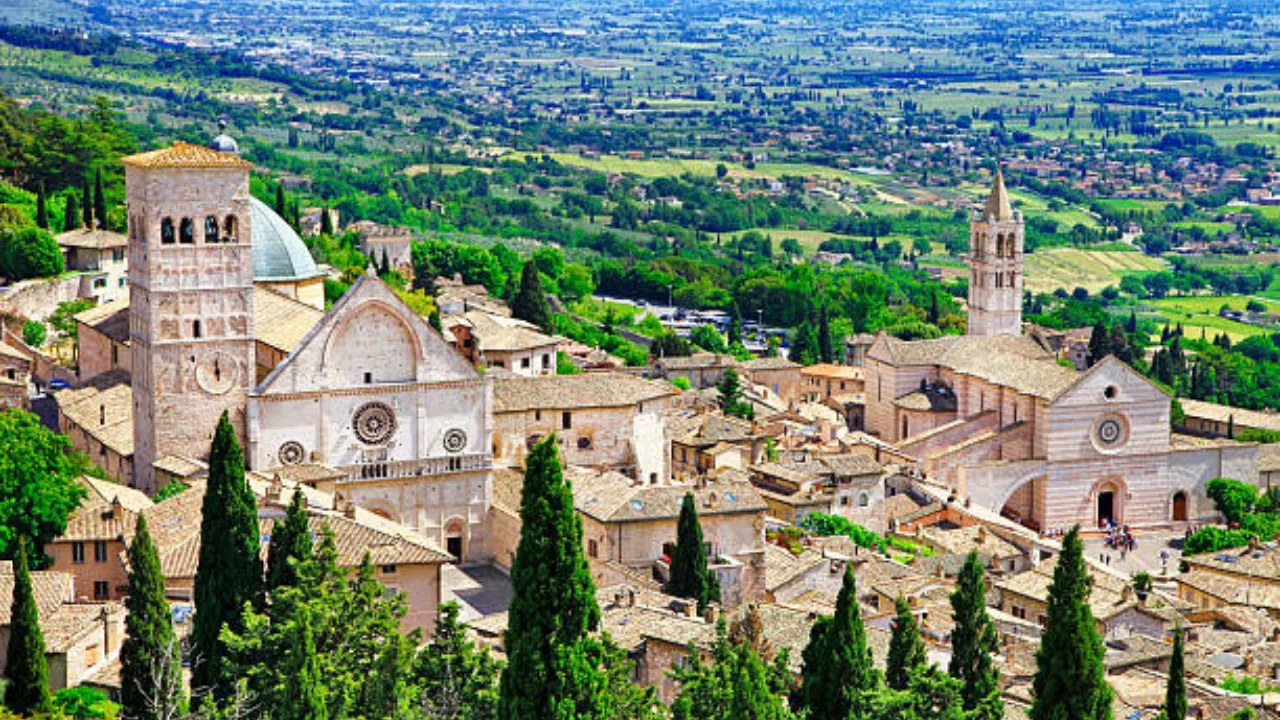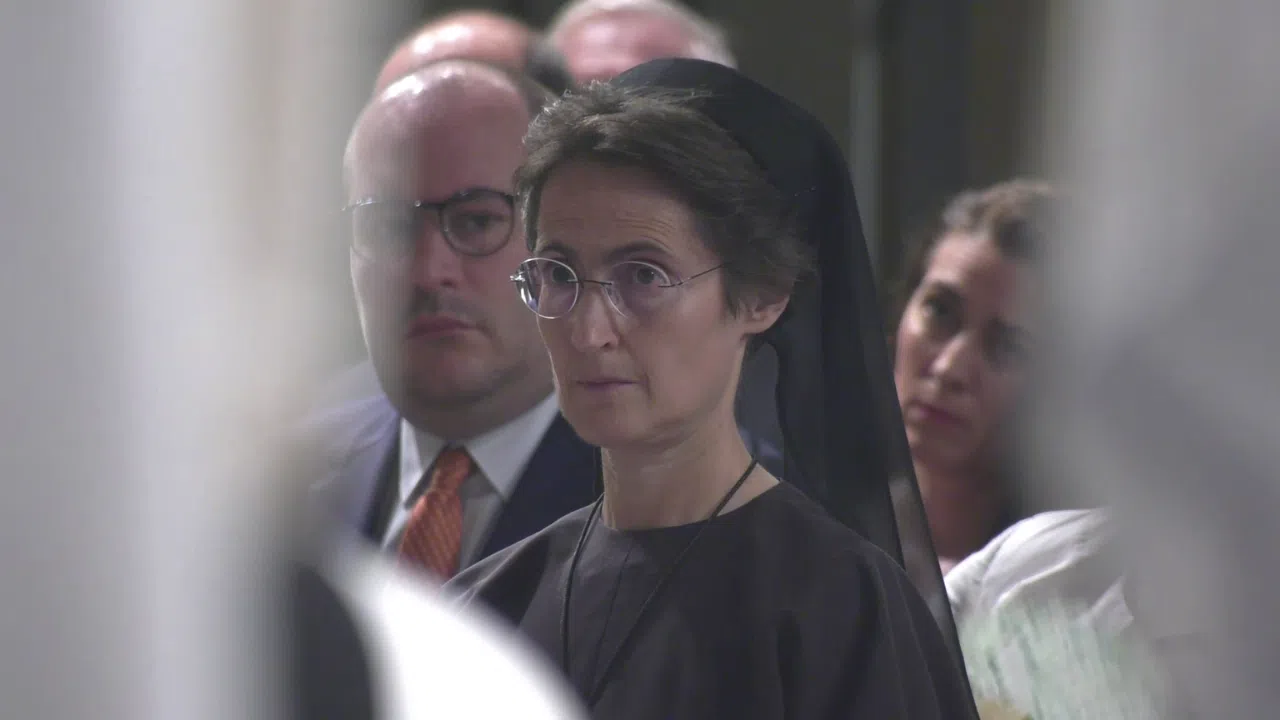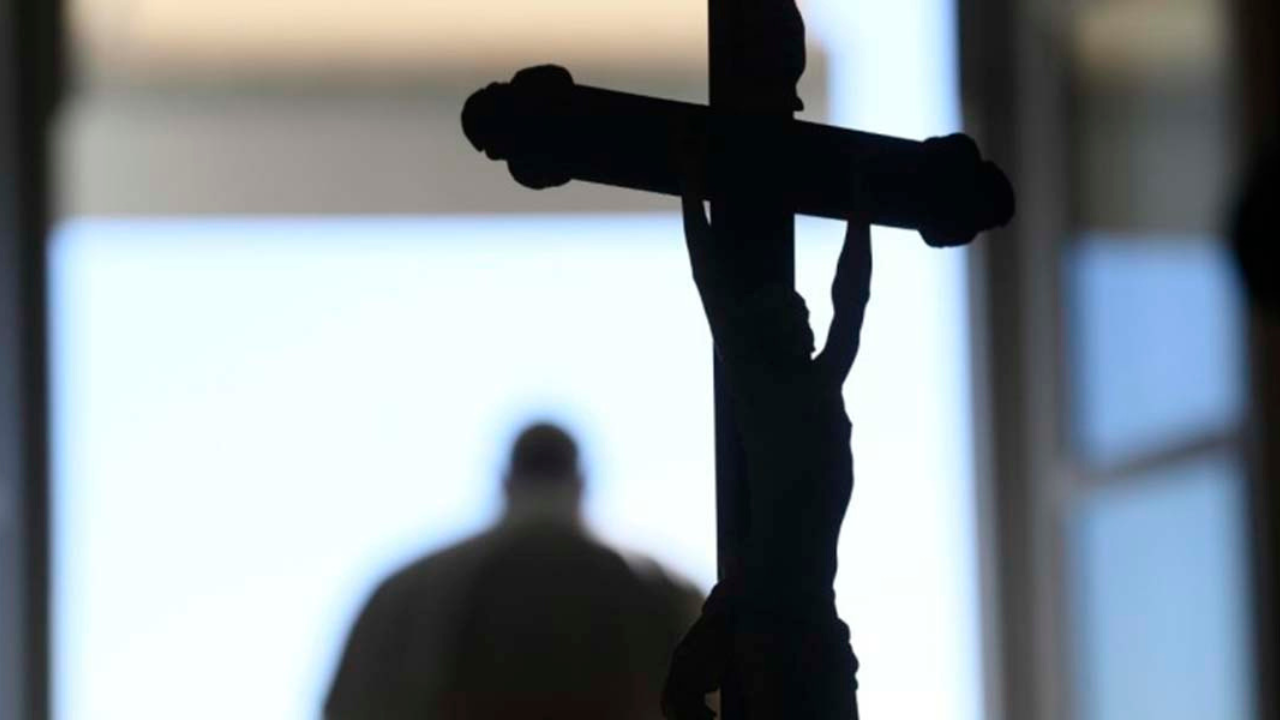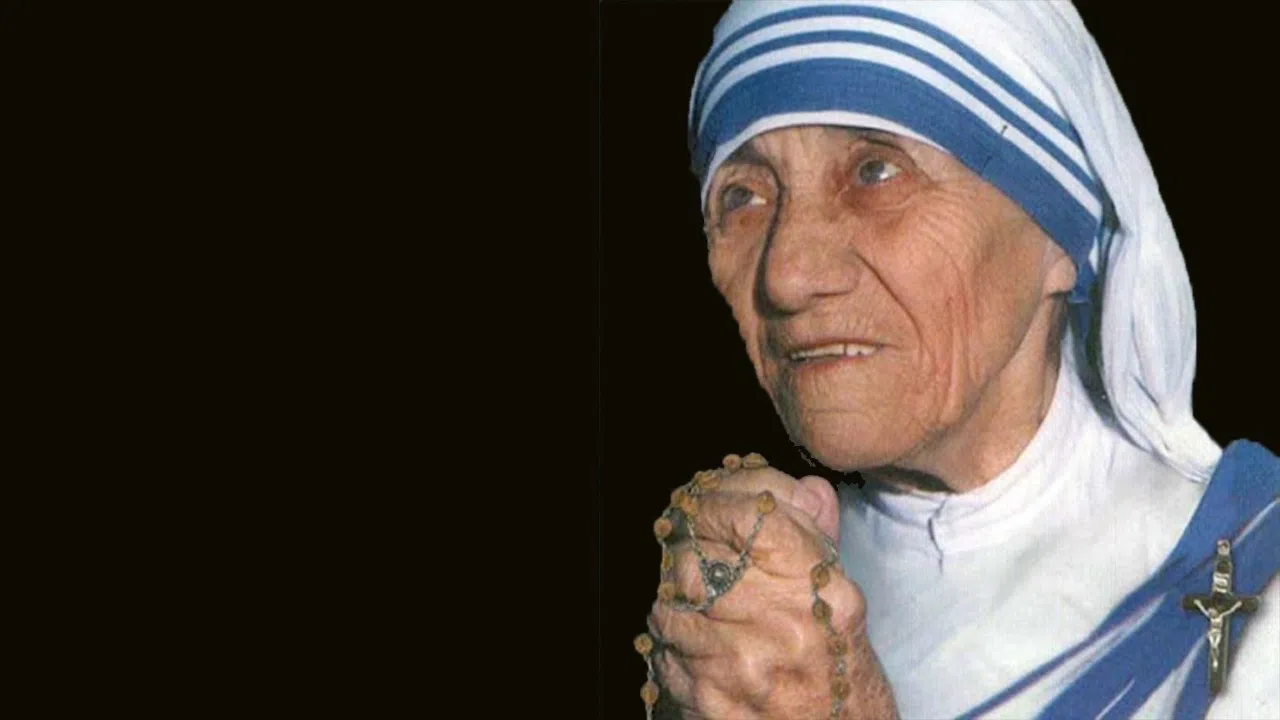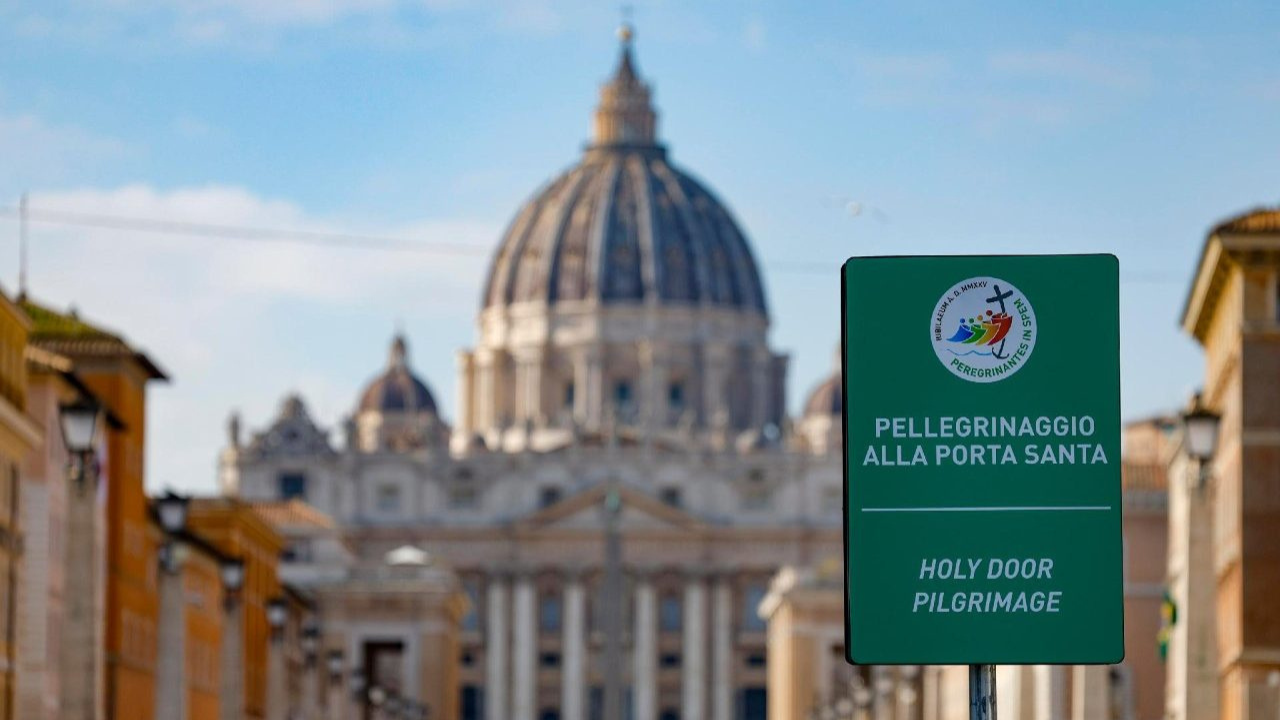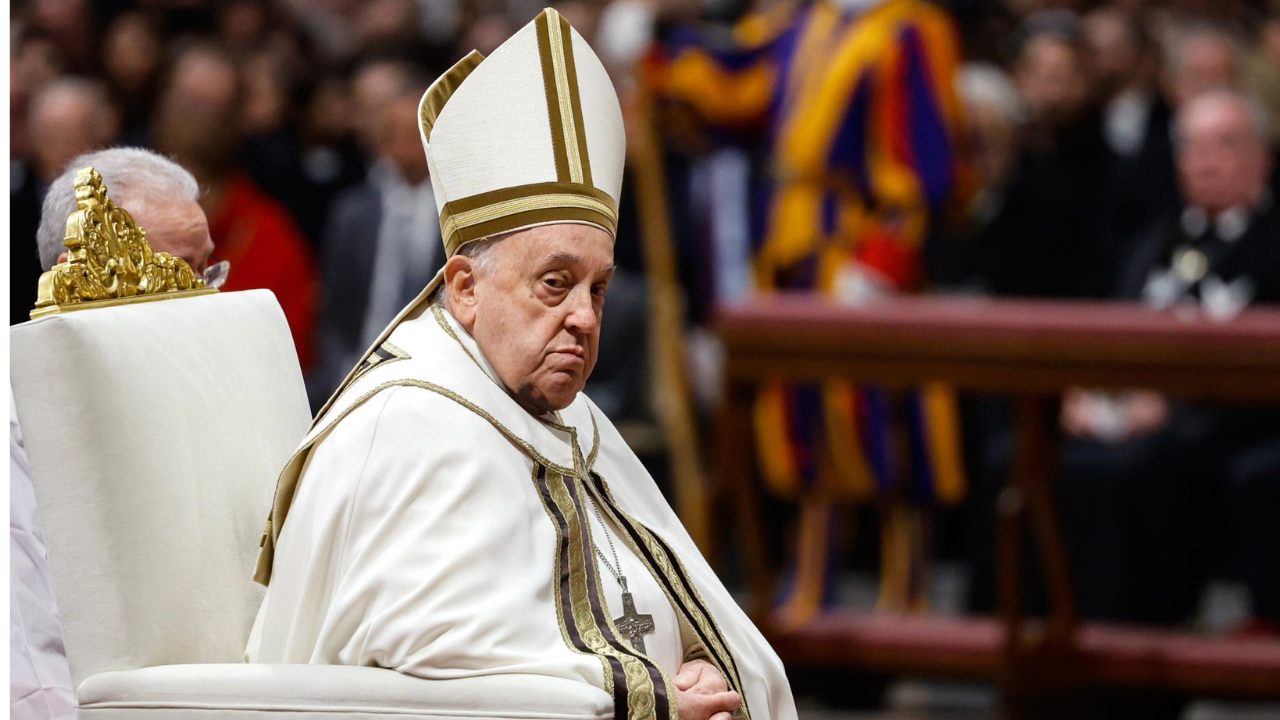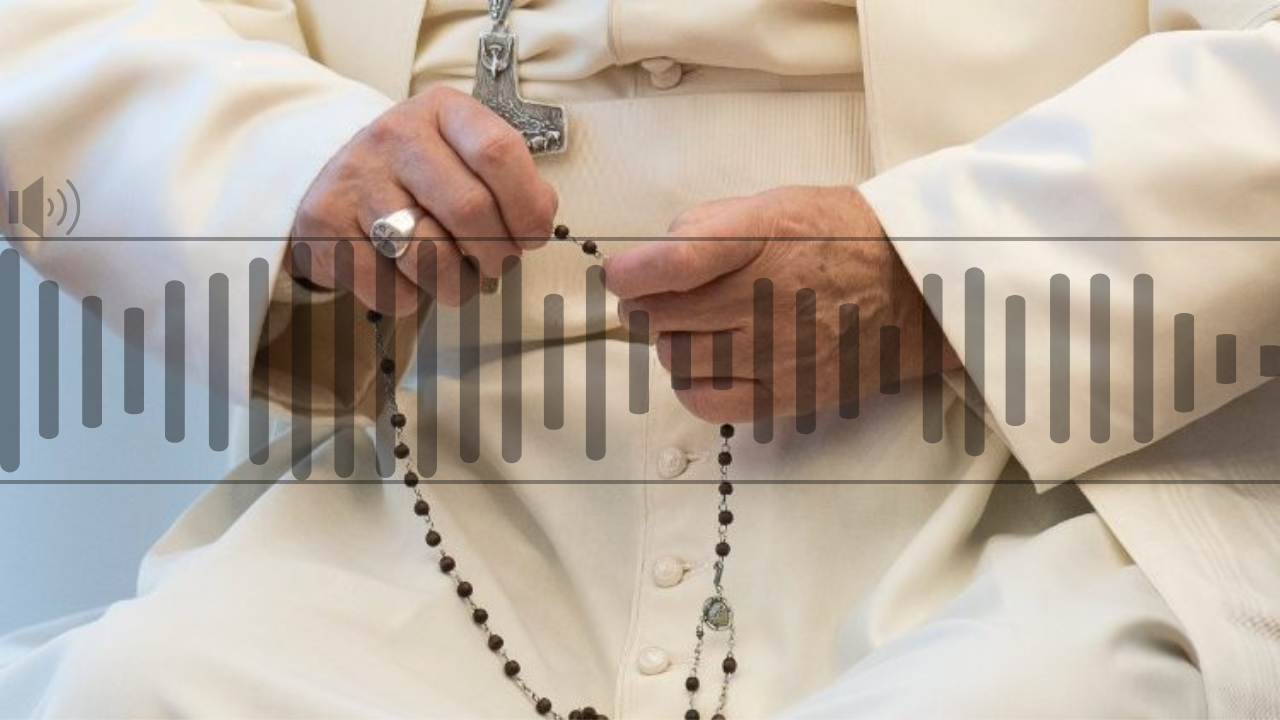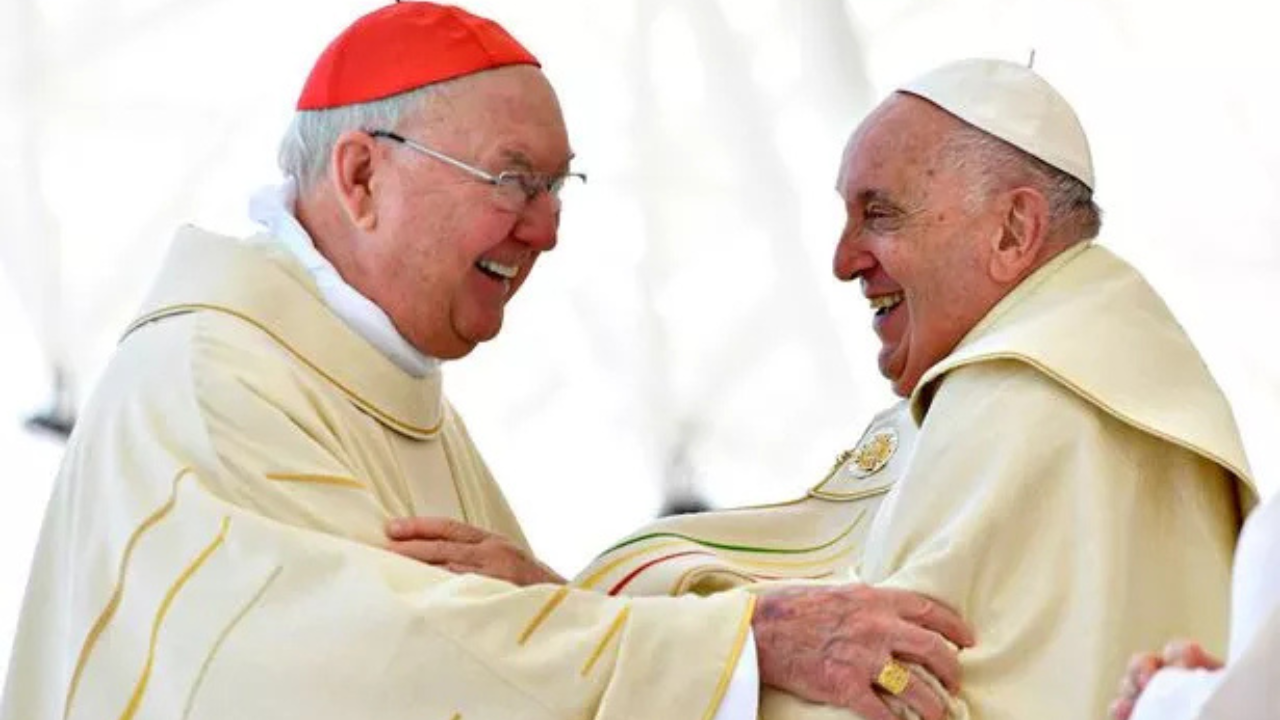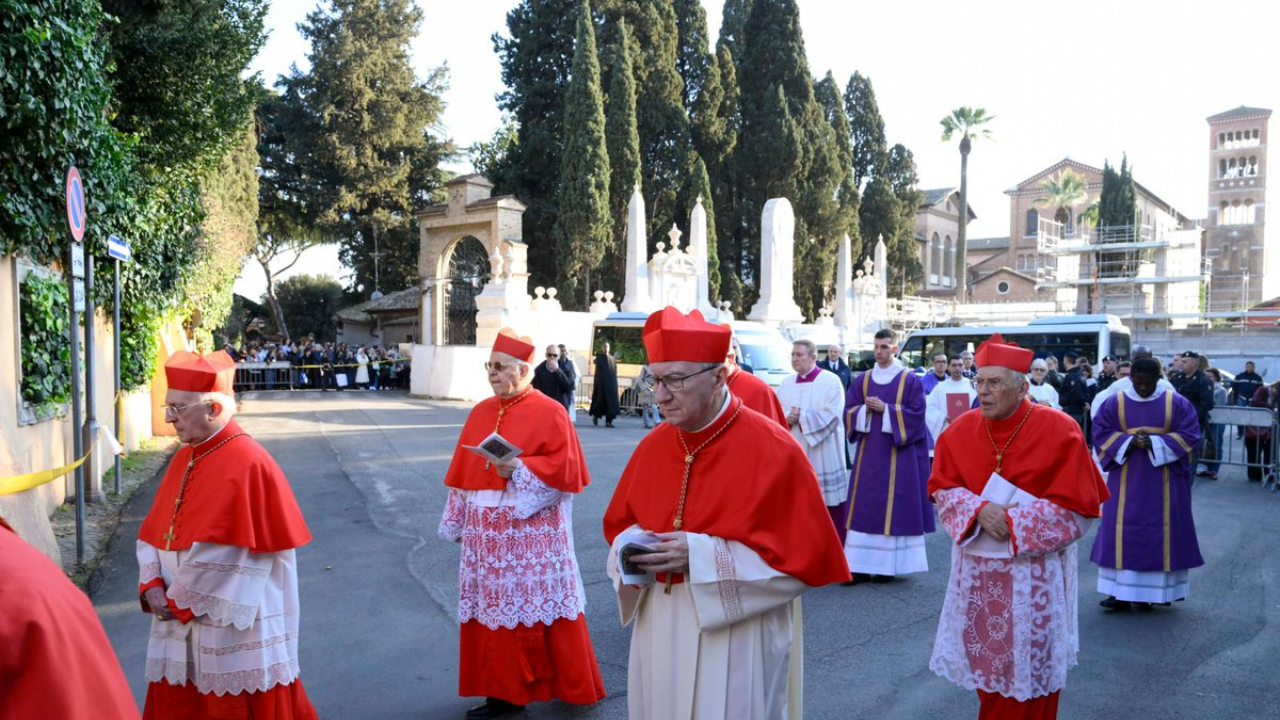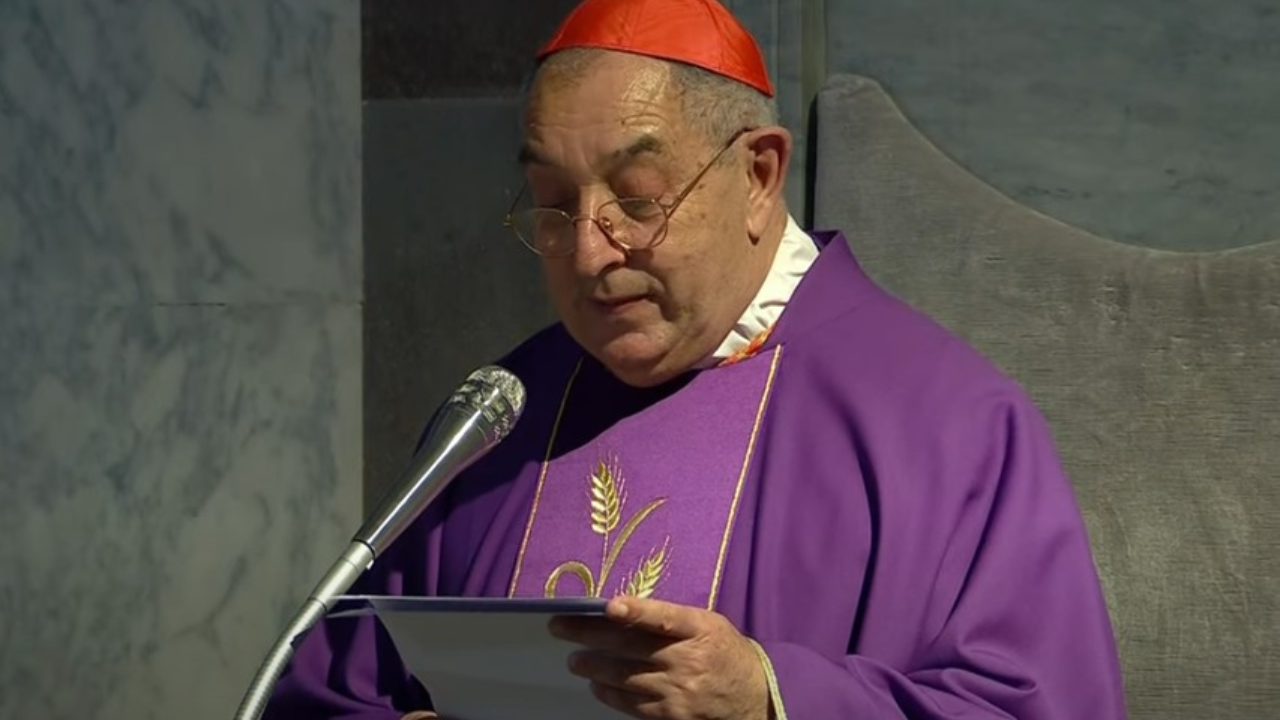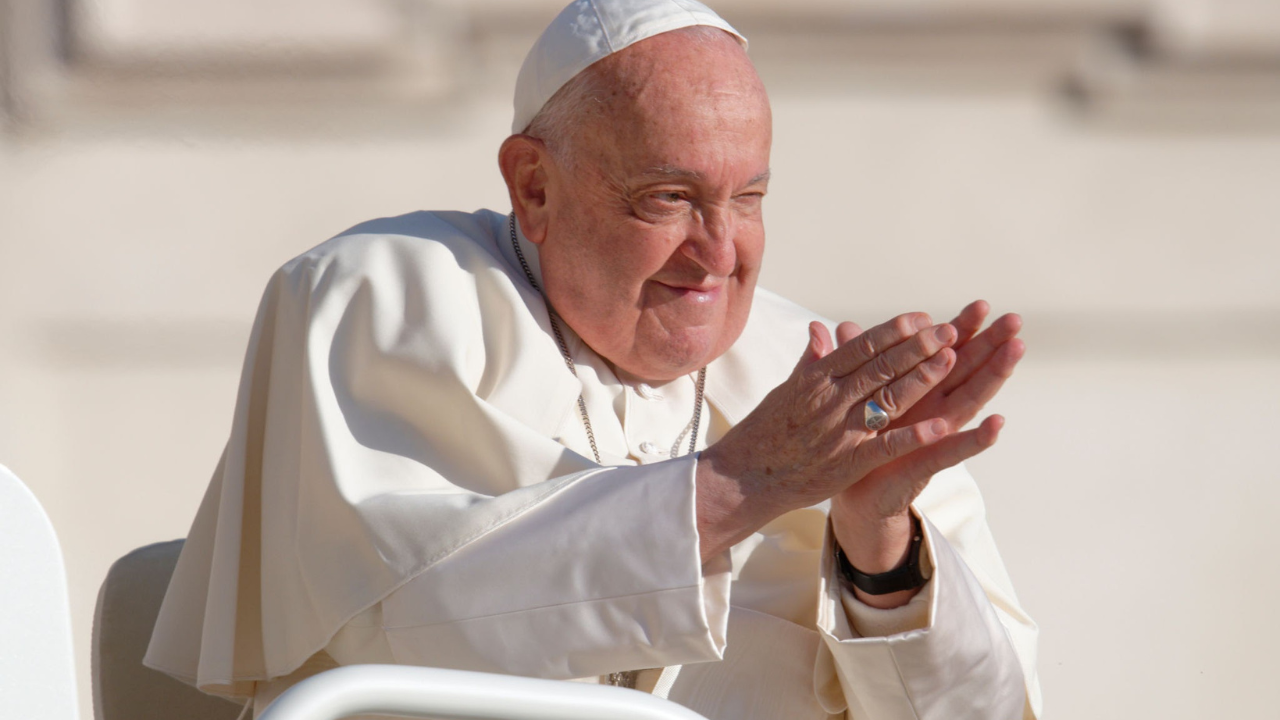This is the Holy Shroud. Many people consider it the most important relic of Jesus' Passion.
Because many believe this is the burial cloth that enveloped Christ's body in the tomb.
It's possible that energy released by the Resurrection could have burnt the image onto the cloth.
Technically, the linen canvas is 14 and a half feet long, and just over 3 and a half feet wide.
There are blood stains, and impressed upon it is the image of a man who has been tortured and crucified.
The story told by these wounds coincides with the story of the Passion: the man on the Shroud wore a crown of thorns, he was scourged, he carried a heavy weight on his back, and his side was pierced after he was dead.
Emanuela Marinelli is one of the world's leading experts on this unique object.
EMANUELA MARINELLI
Expert on the Shroud of Turin
'These clots, these crusts of blood that the poor body had on its skin, are diluted, and the estimated time to create this phenomenon agrees with what we see on the Shroud: between 36 and 40 hours, the exact amount of ime the body of Christ spent in the sepulchre.'
In 1988 fragments of the Shroud were analyzed with Carbon 14 testing. One piece was found to date to the XIV century. (((PHOTO))) But several experts criticised irregularities in the selection of the fragments, saying the way they were analysed invalidated the dating process.
The mystery of the Shroud remains because no one has been able to explain how such a precise image of a crucified man could have been applied to the cloth.
Although the Church has not pronounced definitively on its authenticity, the Shroud continues to be venerated in the Cathedral of Turin in Italy. It's been there since 1578 and is exhibited only in extraordinary circumstances.
John Paul II visited in 1998 and called the relic a 'mirror of the Gospel'.
Benedict XVI went further, describing it as an 'icon of Holy Saturday'.
Pope Francis also prayed silently before the Shroud, and couldn't leave without approaching the relic with his hand.
For some, it's just a historical fake. For others, it's more than simply a relic: it evokes the mystery of a man who suffered excruciating torture, and death on a cross.
Javier Martínez-Brocal

